Today, we’re talking about work. Specifically, where we work, how our expectations of working remotely were radically changed by the covid-19 pandemic, and how those expectations feel like they’re on the verge of changing yet again. For many people, the pendulum has swung wildly between working fully remote and now a push to return to the office from their bosses, and there are a lot of theories about what might be motivating big companies to try and bring everyone back.
Technology
Why Amazon, Disney, and others are pushing employees back to the office
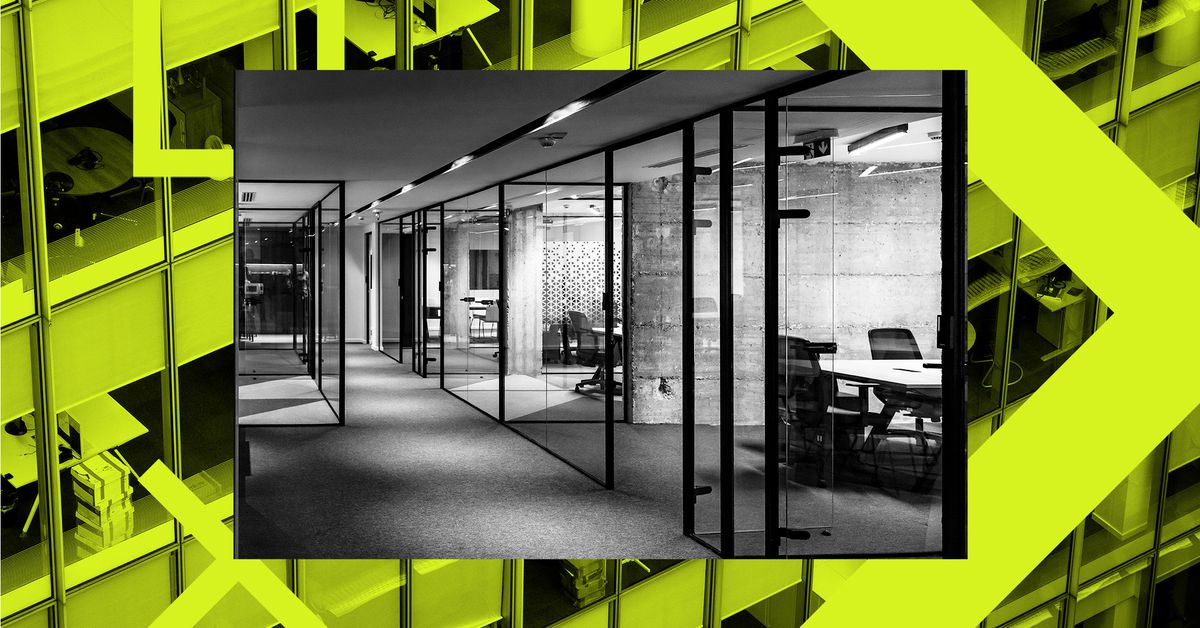
Here on Decoder, I’ve talked to lots of CEOs about the benefits of working fully remote versus hybrid or having everybody back in the office over the past several years, and I’ve heard the full spectrum of responses. Some executives are adamant that people need to be in the office, and others are equally adamant that fully remote is the way to go. We’ll play some of those answers for you as we go so you can get a sense of the enormous range of opinions here.
If you look at the surveys, it’s basically 50/50 — quite a lot of people want to work remotely, and they can be pretty loud online. But there are a lot of people, who are often quieter, who want to go back to the office for pretty good reasons. Some folks just don’t have the space to work from home, or they’re simply tired of making video calls in sweatpants all day and never really leaving the house. I know some people who really like just being able to leave work at the office when they head home for the day, and I’ve heard from a lot of younger people who are struggling to get face time with the more senior and experienced people at their companies in order to build relationships and grow their networks.
The messy middle of all this is what quite a few companies have settled on: hybrid work, which allows for a combination of in-office and remote work. This is how The Verge runs, and I quite like it — but it’s not perfect. Like so many people who work in a hybrid environment, there are days where I go into a mostly empty office and then sit on Zoom in a phone booth, and there are days when I realize I’m the only one in a meeting sitting at home because everyone else has gone into the office.
Figuring out how to make hybrid work is a long-term cultural project that we really only started in 2020. While there are some obvious benefits, it’s not clear if anyone’s really cracked it in a way that scales across different kinds of companies.
Now, some companies have decided the nuance just isn’t worth it. In September, Amazon mandated that all employees would return to an office five days a week starting in January. In the memo announcing the change, CEO Andy Jassy argued that the company had “observed that it’s easier to learn, model, practice, and strengthen our culture,” that “collaborating, brainstorming, and inventing are simpler and more effective,” and that “teams tend to be better connected to one another” when everyone is in the office.
Amazon isn’t alone in wanting employees back at their desks. Companies like Disney and Salesforce have also pushed for employees to come back to the office at least four days a week, making similar arguments. Other companies, like Apple, have been steadily pressuring workers to come back for quite some time — that beautiful new spaceship office in Cupertino wasn’t built to stay empty.
But is the return to office really about building company culture and being more creative and productive? I have to tell you, there is a huge chunk of The Verge and Decoder audience that is absolutely convinced that any big return-to-office policy change is actually just a layoff in disguise — we get emails making this case virtually every time one of these moves is announced.
Jassy even addressed this directly, just a few days ago, in an all-hands meeting. Responding to claims that the return-to-work mandate is a quote “backdoor layoff,” he told employees that that is simply not true. We’ll come back to that later on.
So I wanted to know what’s been going on, what the real reasons behind return-to-office might be, and where this is all headed next. To explain it, I caught up with two experts on the subject: Stephan Meier, a professor of business strategy at Columbia Business School, and Jessica Kriegel, the chief strategy officer at workplace culture consultancy Culture Partners.
We dive into what’s been happening to the nature of work today, and you’ll hear both of them lay out some of the key reasons behind the return-to-office push. We also try to figure out whether Amazon is just an outlier or, as you’ll hear Jessica say, “the tip of the spear” in what could be something much bigger.
Here are some of the news stories, surveys, and studies we discussed in this episode, if you’d like to learn more:
- Amazon is making its employees come back to the office five days a week | The Verge
- Amazon CEO Andy Jassy denies that 5-day office mandate is a ‘backdoor layoff’ | CNBC
- Bob Iger tells Disney employees they must return to the office four days a week | CNBC
- A quarter of bosses admit return-to-office mandates meant to make staff quit | Fortune
- More Americans now prefer hybrid over fully remote work, survey finds | Axios
- Google tells staff: stay productive and we’ll stay flexible | Business Insider
- The list of major companies requiring employees to return to the office | Business Insider
- Thinking Inside the Box: Why Virtual Meetings Generate Fewer Ideas | Columbia
- Duolingo CEO Luis von Ahn wants you addicted to learning | Decoder
- The CEO of Zoom wants AI clones in meetings | Decoder
- Sundar Pichai on managing Google through the pandemic | The Vergecast
Technology
The real reason VAR infuriates football fans and how to fix it
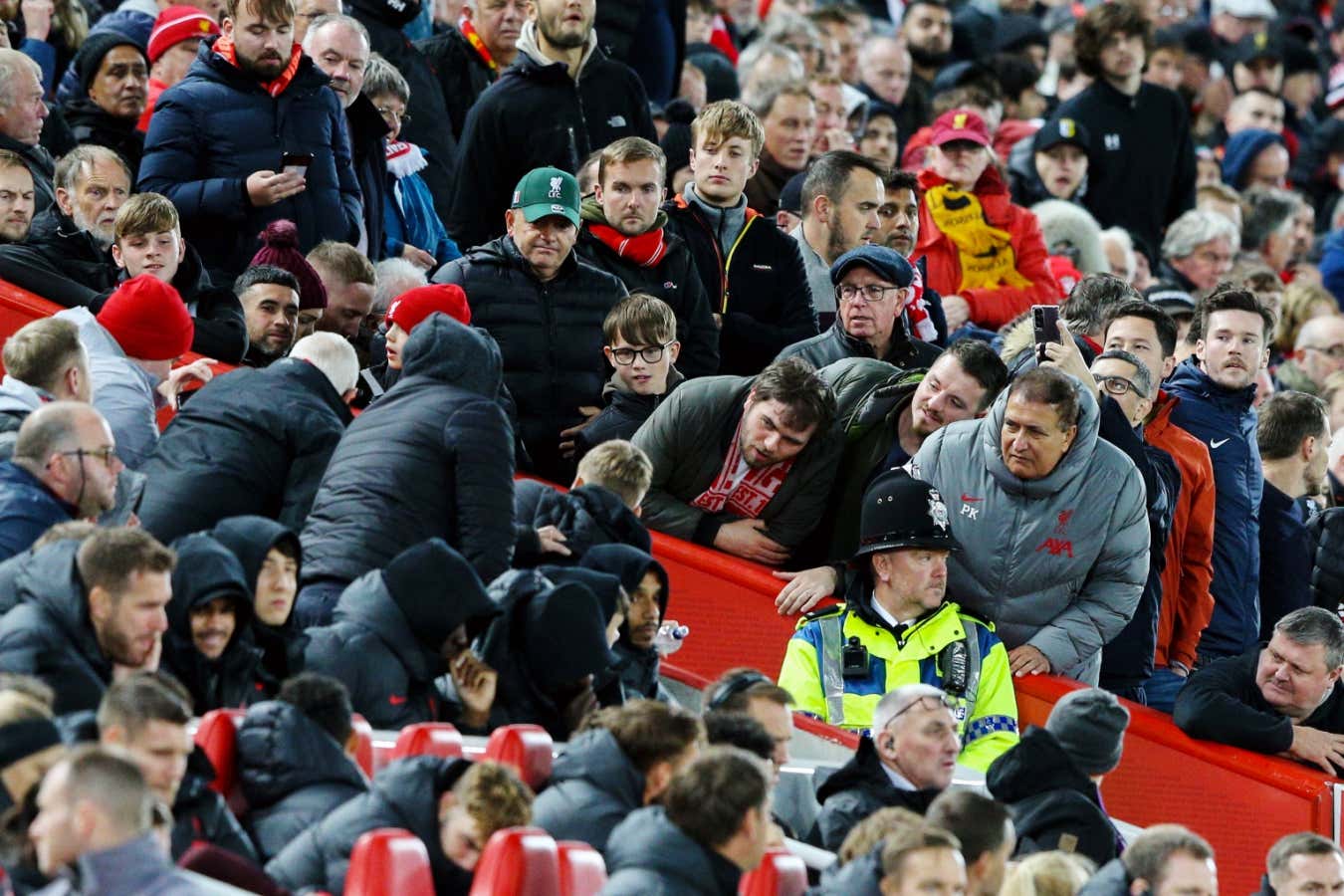

Liverpool fans jostle for a look at the on-field VAR screen at Anfield stadium
Alex Dodd – CameraSport via Getty Images
If you have watched any football – or soccer – over the past few years, you will know that the game has been consumed by controversies over its new refereeing technology. The video assistant referee (VAR) system was introduced to the English Premier League in 2019 to reduce refereeing errors and get more decisions right. Instead, it has created new kinds of uncertainty and undermined our understanding of fundamental rules like offside and handball. It has also infuriated fans, who can often be heard chanting “it’s not football any more” after a long-winded VAR check.
It is fair to say that football fans like to get irate, especially when refereeing decisions go against their team. But as I argue in my new book, I Can’t Stop Thinking About VAR, there’s more to this than meets the eye. As someone whose job involves developing new methods of measuring educational attainment, I have thought long and hard about the reasons why VAR has been so frustrating. I believe its problems relate to the challenge of pinning down objective reality, the difficulty of precise measurement and the human dislike of uncertainty.
What I have also come to realise, however, is that VAR exemplifies the limits of rationality in many walks of life far beyond the football field. As such, a brief exploration of the history of measurement more broadly – from attempts to pin down the boiling point of water in the 18th century to the struggle to accurately assess the…
Technology
inZOI finally gets release date, but it’s a delay to 2025
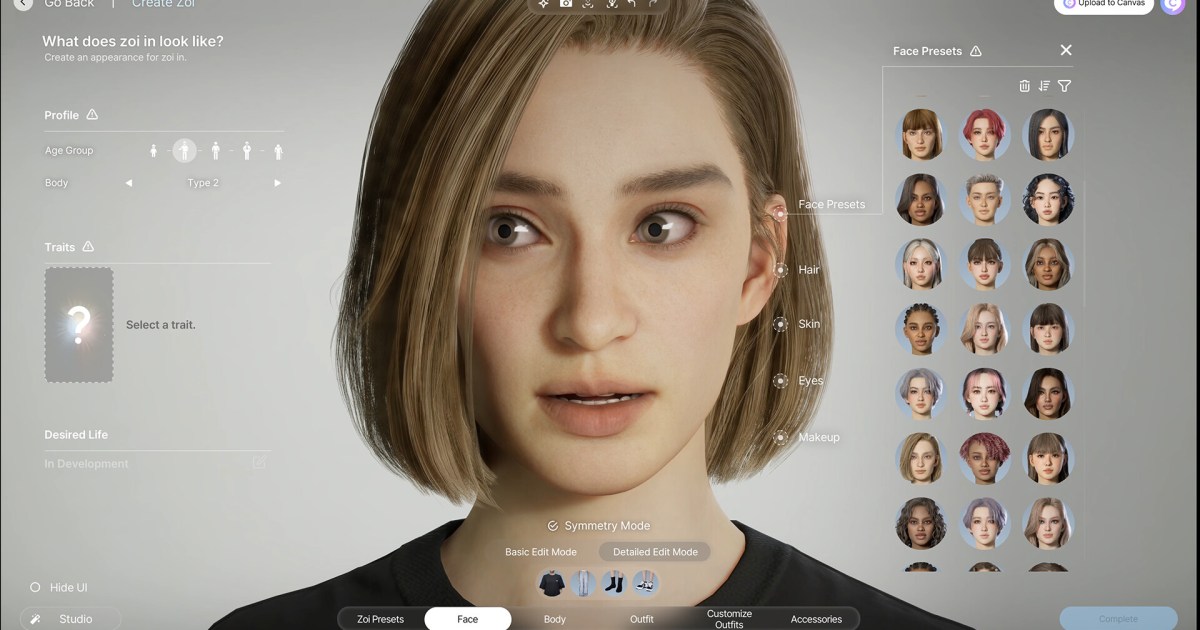

The developers behind inZOI announced a 2025 early access release date on Thursday despite assurances that the hyper-realistic life sim would still launch sometime this year.
Game producer and director Hyungjun “Kjun” Kim posted an open letter to the community on the inZOI Discord saying that the game will be coming out on March 28, 2025, instead of in late 2024 so that the developers can give the game “the best possible start.”
While inZOI never received a concrete release date until Thursday, a spokesperson for the team at Krafton told PC Gamer just last month that the plan was to release it in 2024. In August, the studio released inZOI: Character Studio on Steam, a demo of its character creator. It was only up for five days, but immediately drew the attention of players who wanted to re-create fictional characters and real-life people with ridiculous amounts of detail.
Following feedback from that demo, along with various playtests, Kim said the team needed to work more to give players “the most complete experience possible.”
“It is said that among primates, raising a human child to adulthood takes the longest time because humans must be prepared to endure and adapt to their ever-changing surroundings,” Kim wrote. “The extra love and care that is required to properly nurture a child is how I see our journey with inZOI—a game that we will be nurturing together from its Early Access birth. This change in our release date represents our dedication to giving inZOI a stronger foundation, so we can embark on this journey together in the best way possible.”
InZOI is poised to be a real The Sims competitor, and is one of the few still due for release after Paradox Interactive canceled its entry in the genre, Life by You, before it could even reach early access. At the time of this writing, it’s the 12th most wishlisted game on Steam.
Science & Environment
FTX’s Caroline Ellison reports to prison to begin 2-year sentence
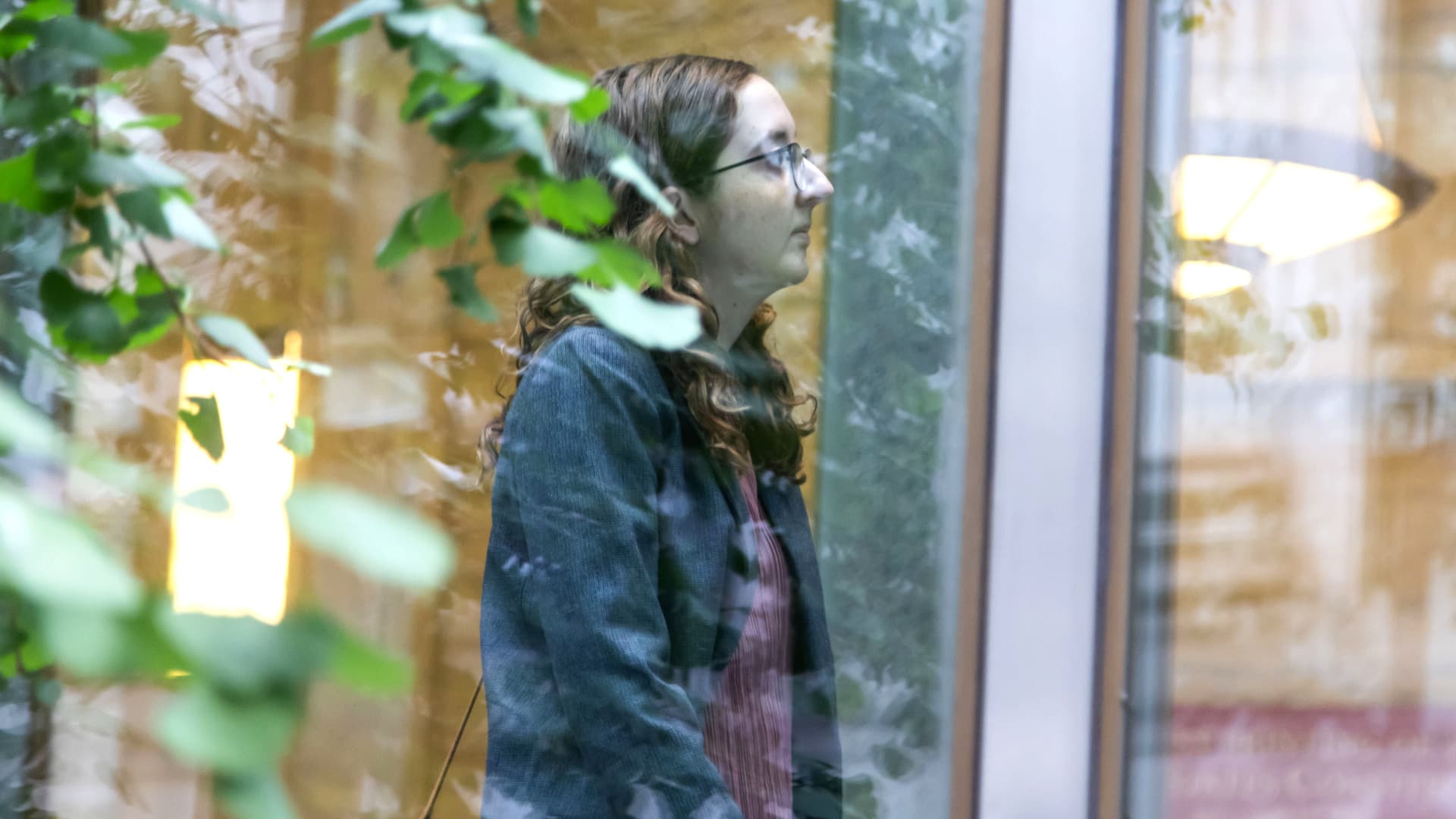
Caroline Ellison, former chief executive officer of Alameda Research LLC, arrives at court in New York, US, on Tuesday, Sept. 24, 2024.
Michael Nagle | Bloomberg | Getty Images
Caroline Ellison, the star witness in the prosecution of FTX founder Sam Bankman-Fried, reported to a low-security federal prison in Connecticut on Thursday, according to a spokesman for the Bureau of Prisons.
In September, Ellison was sentenced to two years in prison and ordered to forfeit $11 billion for her role in the massive fraud and conspiracy that doomed the cryptocurrency exchange once valued at $32 billion.
The federal Probation Department had recommended that Judge Lewis Kaplan sentence Ellison to three years of supervised release, with no time behind bars. Defense lawyers also had requested a punishment that didn’t include prison time.
While Kaplan praised Ellison for her extensive cooperation with prosecutors — which led to the conviction of Bankman-Fried — the judge said her criminal sentence needed to deter other potential bad actors from committing fraud.
Ellison ran Alameda Research, which was a sister hedge fund of FTX. She was also romantically involved with Bankman-Fried.
Alameda received much of the $8 billion in customer funds looted by Bankman-Fried from FTX. The stolen money was used for Alameda’s trading operation and other purposes.
Ellison reached a plea deal with prosecutors in December 2022, a month after FTX spiraled into bankruptcy. She pleaded guilty to conspiracy and financial fraud charges.
Kaplan called FTX the greatest financial fraud perpetrated in the history of the U.S., and told the court in Manhattan during the sentencing that a “literal get-out-of-jail-free card I can’t agree to.”
“I’ve seen a lot of cooperators over the years and I’ve never seen one quite like Miss Ellison,” said Kaplan, who also said he believed that Ellison was genuinely remorseful for her crimes and that her cooperation carried a steep price for her emotionally.
Late last month, Former FTX executive Nishad Singh was sentenced to time served and three years of supervised release, becoming the fourth ex-employee of the collapsed crypto exchange to be punished.
At her sentencing, Ellison read from a statement in a shaky voice while crying at times as she apologized to the people she had hurt and said she was deeply ashamed. She also said she was sorry for not being brave enough to walk away from FTX and Bankman-Fried.
Kaplan allowed Ellison to remain free on bail until surrendering to prison either on or after Nov. 7.
Bankman-Fried chose to stand trial and was convicted of all seven criminal fraud charges against him. He was sentenced to 25 years in prison in March and also was ordered to pay $11 billion in forfeiture by Kaplan.
Both Bankman-Fried and Ellison had faced the same statutory maximum sentence of about 110 years in prison for their crimes.
WATCH: FTX founder Sam Bankman-Fried appeals fraud conviction

Technology
Smart TVs Gift Guide 2024

Smart TVs are always a great gift to pick up, no matter the holiday. And these days, good TVs are getting cheap, and expensive TVs are getting even better. In fact, the expensive TVs are leaving little reason to go to the theater to watch any type of movie. In this gift guide, we’re going to aim to bring you the best smart TVs you can buy right now, so you spend your money wisely.
Best Smart TVs
These are the two absolute best Smart TVs that you can buy this holiday season. So if money is no object, then these two will provide you with the best picture quality on the market.
Samsung S90D OLED

The Samsung S90D is perhaps the best TV that money can buy right now. Particularly when you factor in the cost. The S90D starts at $1,397 and does go as small as 42 inches. But for all of these TVs, we will be comparing the 55-inch model which is the most popular size. At 55 inches, the S90D does go for $1,797. However, it is often on sale for cheaper than that.
With the S90D, you’re getting a stunning OLED TV that does have a refresh rate of 120Hz but it can go up to 144Hz, making it great for watching sports and playing games.
Like most 4K TVs, Samsung is also using 4K AI Upscaling so that your HD and FHD content look great on this incredible OLED TV. Samsung has included Dolby Atmos and Object Tracking Sound Lite, giving you 3D surround sound straight from the speakers inside the TV. Now, unfortunately, there is no Dolby Vision included with this TV or any Samsung TV. Instead, Samsung prefers to support HLG, the open-source alternative to Dolby Vision.
This is all powered by the NQ4 AI Gen2 processor, which utilizes 20 specialized networks to drive the intuitive smart TV hub, Dolby Atmos sound, and the upscaled 4K content.
Sony Bravia 8

The Sony Bravia 8 is about the same price as the Samsung S90D OLED, but it does offer better sound, without a soundbar. The 55-inch Bravia 8 is normally priced at $1,799, however it is also often on sale for less.
With the Bravia 8, Sony said they were “bringing cinema home,” and when we reviewed the Bravia 8, we agreed that they did just that. This is a stunning TV, with incredible picture quality, great viewing angles, and of course Google TV built-in.
Having Google TV built-in means that Sony is able to run all sorts of apps like Netflix, Hulu, YouTube and much more. Bravia Core is also included. Sony has also made the Bravia 8 use less power. In fact, it has also included a ton of different power saving features, so you’re electric bill doesn’t go through the roof while you’re watching TV on the Bravia 8.
Since this is an OLED TV, that means that the colors are true-to-life, and the blacks are actually black. However, this does also get pretty bright, which isn’t always true for OLED TVs. It is also supporting Dolby Vision and Atmos, along with IMAX Enhanced. Making it great for watching all sorts of TVs at home.
Best TVs under $1,000
If you have a budget of $1,000 for a new TV, then you really can’t go wrong with either of these options. They aren’t quite as good as the Samsung and Sony options above. But for under $1,000, you are still getting a fantastic TV.
TCL QM7 QLED 4K TV

The TCL QM7 QLED 4K TV is a QD-Mini LED TV, which means that you’re getting a lot of the same advantages as using OLED, but it’s much brighter. This TV is actually probably one of the best that you can buy for $799, and TCL does sell it in other sizes, up to 98-inches.
One of the main advantages that the TCL QM7 has is the amount of dimming zones it has, which is 1,500+. This allows the TV to change color more accurately, instead of giving you gray instead of black. Similar to OLED, but there’s two major advantages that QD-Mini LED have over OLED which is the brightness and no screen burn-in.
For 2024, TCL’s TVs all use Google TV as the software (next year, it’ll be all Roku, as they do switch back and forth to support both platforms). Which means you get the Google Assistant, Cast, and all of your favorite apps built into the TV, saving you a HDMI port.
This is an incredible value for under $1,000, and even at its regular price this does tend to go on sale quite often as well.
Sony Bravia 3

Also announced this year is the Sony Bravia 3, which is Sony’s entry-level TV. Which, as you likely know, Sony’s “entry-level” is still really good. This is a 4K LED TV, so it’s not Mini-LED or OLED like its other models, which is what brings the price down considerably. This 55-inch TV is $699. Sony does also sell it in 43-, 50-, 65-, 75- and 85-inch models, up to $1,098.
This TV is also part of Sony’s “Bring the Cinema home” marketing, and while it is an LED TV, it is still a really good option. For those who aren’t looking to spend a ton but still want good picture quality, this is a great option.
The Bravia 3 supports Dolby Vision HDR and Dolby Atmos, giving you a great movie-watching experience. Sony also includes some other features for the PlayStation 5, like Auto HDR Tone Mapping and Auto Genre Picture Mode. It does also have HDMI 2.1 for 4K120 gaming.
Best TVs under $600
Looking for a good TV on a budget? We’ve got you covered, with two great TV options that are under $600. And during the holiday season, they are typically even cheaper.
Amazon Omni QLED

It’s still pretty surprising that you can get a QLED TV for under $600. The 55-inch model is normally priced at $599, though it is also sold in 43-, 50-, 65- and 75-inch models.
With this being an Amazon TV, you get Fire TV built-in. Of course, that gives you tons of apps to use on the TV, including Netflix, Hulu, Amazon Prime Video, and much more. Alexa is also included for voice support and controlling smart home products. Amazon claims that there are over 1.5 million movies and TV episodes available on Fire TV, so you’ll definitely find something to watch.
Amazon is supporting Dolby Vision IQ, HDR10+ Adaptive, HDR10, and HLG for HDR content, which is going to provide a really incredible picture for watching TV and movies. Unfortunately, the Amazon Omni QLED does not support HDMI 2.1, but it does have three HDMI ports. There are two HDMI 1.4 and one HDMI ARC port, so you can toss in a soundbar if needed.
TCL S5 Series

Rounding out our gift guide for TVs is the very comparable TCL S5. This is a cheaper TV, coming in at $329 for the 55-inch model. TCL sells this TV in sizes ranging up to 75 inches. This would be a great TV gift to give to someone going to college or to put in a spare bedroom.
The TCL S5 is a 2024 model, and uses Fire TV built-in. Giving you access to a ton of apps like Netflix, Hulu, YouTube, Amazon Prime Video and much more. TCL has also been able to add support for Apple AirPlay 2 as well as Google Cast. So no matter which ecosystem your smartphone is using, you’ll be able to cast content to this TV with ease.
It also has support for Dolby Vision and HDR PRO+. On the audio front, there’s Dolby Atmos available too. While the TCL S5 does not support HDMI 2.1 for gaming, it does have Auto Low Latency Mode or ALLM. Which TCL actually calls “Auto Game Mode”.
For the price of this TV, it’s pretty hard to find a better value.
Technology
Black Friday deals bring the Google Nest wired indoor camera down to just $70
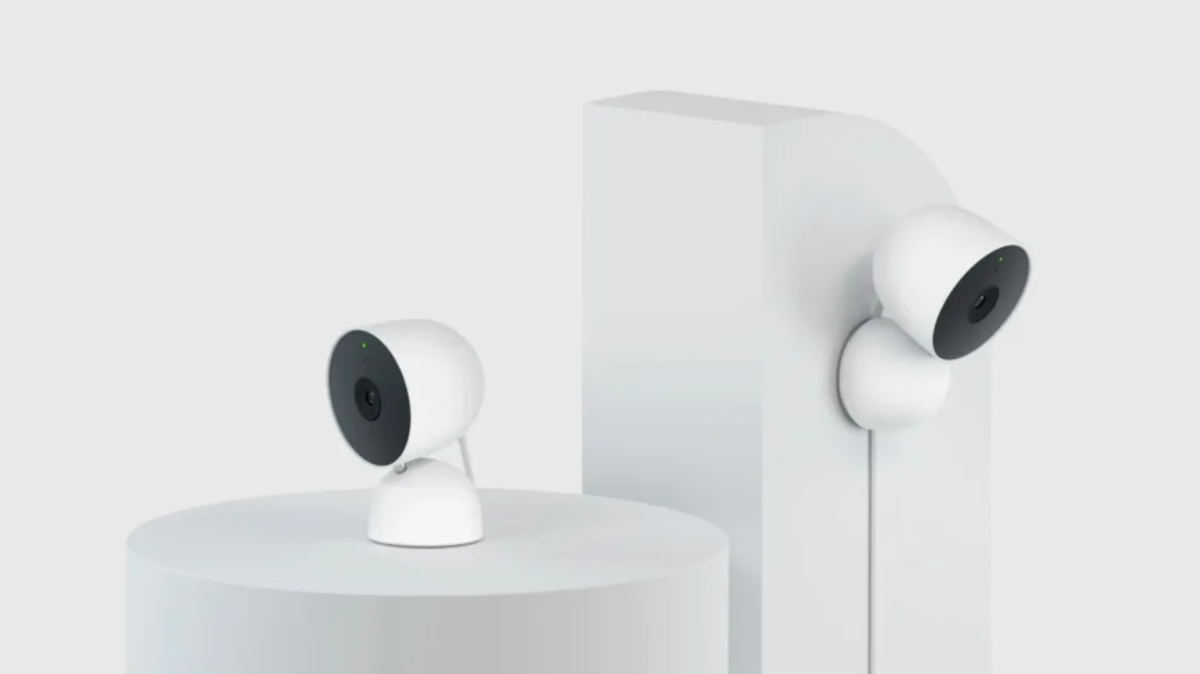
The Google Nest wired indoor camera as part of an early Black Friday deal. The cam is normally $100, so this represents a savings of 30 percent. This is close to a record low price, which is never a bad thing. The sale includes three colorways, including white, beige and light blue.
The second-gen wired device is designed for indoor use, thus the name, and is capable of capturing 1080p HDR video. It’s motion sensitive and uses a bit of AI trickery to discern between people, animals and vehicles. The camera also includes night vision and an hour of event recording on the device itself, which comes in handy in the case of a Wi-Fi outage.
There’s a two-way audio function, as the camera includes both a microphone and a speaker. People can boot up the affiliated Google Home app to spark up a conversation. This app also lets you instantly call up emergency services if the conversation doesn’t go as planned, though that requires a Nest Aware subscription.
This brings us to a fairly significant caveat, though this one pops up with most modern security cameras. A whole lot of stuff is locked behind that aforementioned Nest Aware paywall, . This plan gives purchasers 60 days of video history and the ability to watch live streams on smart displays and even smart TVs. Subscribers will even receive alerts when familiar faces are recognized by the camera.
Check out all of the latest Black Friday and Cyber Monday deals here.
Technology
Startup Battlefield 200: Celebrating outstanding achievements
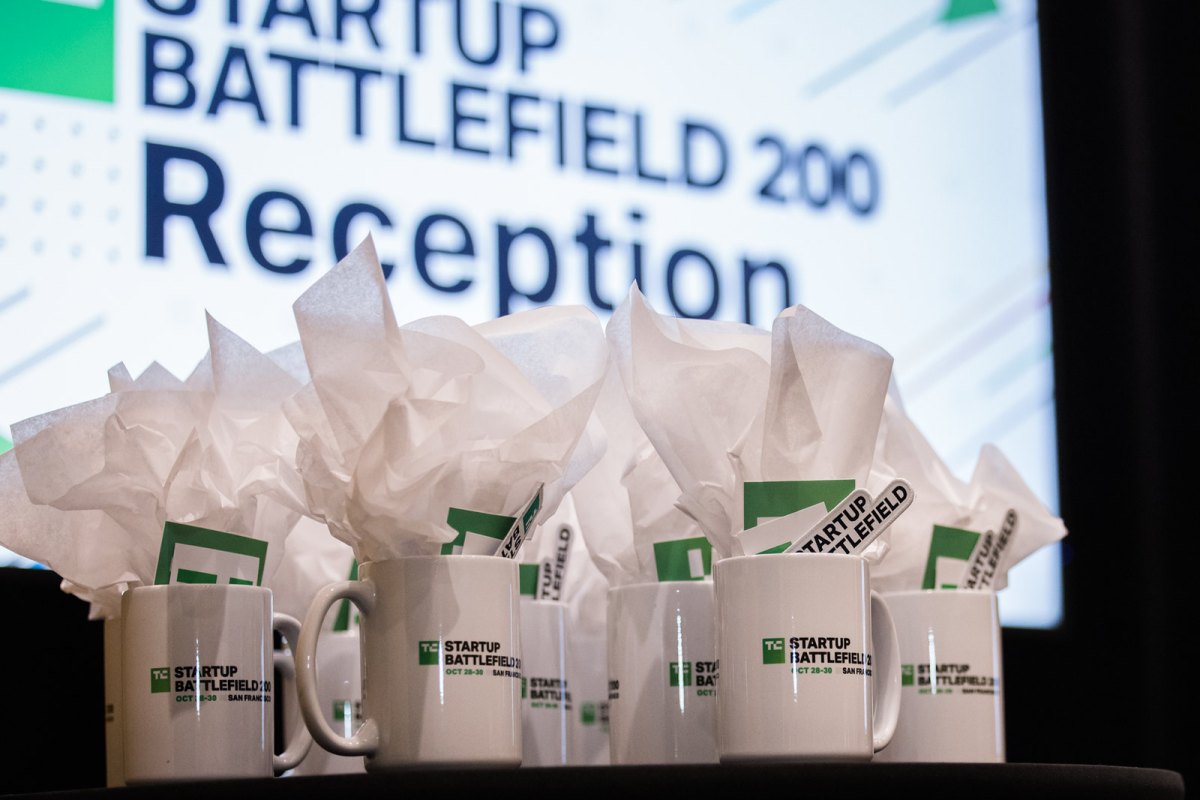
This year, TechCrunch Disrupt 2024 showcased the incredible talent and groundbreaking ideas of our 2024 Startup Battlefield 200 cohort.
Out of thousands of applications, we selected 200 of the most promising startups, each bringing unique innovations to their respective industries. The competition culminated in an electrifying event where these startups had the opportunity to pitch and demonstrate their solutions live over three days.
From the Top 20 Finalists, TechCrunch editorial selected the top five companies who battled it out for the $100,000 equity-free prize money and the coveted Disrupt Cup. The well-deserved win went to Salva Health, with a strong runner up, Gecko Materials.
Among the Startup Battlefield 200 companies were many industry-defining companies exhibiting and pitching on the Showcase Stage; here are the standouts:
Best Showcase Stage pitch by industry group
Hardware, Robotics + IoT
Avol uses autonomous drones to deliver lab samples, speeding processing up to 11x faster at lower costs.
Health Tech + Biotech
Ovum Health merges molecular diagnostics, medicine, and behavioral science for healthier moms and babies.
Security, Privacy + Social Networking
Factiverse aids finance and media in verifying information, acting like Grammarly for fact-checking.
Fintech + Edtech
Untapped Solutions connects justice-impacted individuals with jobs and services via an AI-driven CRM.
Sustainability, Mobility + Logistics
Prosal helps business development teams at federal government contractors automate capture research to save time predicting contract opportunities using AI.
SaaS, Enterprise + Productivity – Session 1
Eticas.ai identifies black box algorithmic vulnerabilities and retrains AI-powered technology with better source data and content.
SaaS, Enterprise + Productivity – Session 2
OMADEUS is a dynamic network of self-aware AI agents to replace outdated productivity software for SMEs.
Best Booth — It’s a tie!
The Best Booth award ended in a tie.
Cloneable.ai hand-built and painted a utility pole out of Styrofoam to demonstrate their innovations in safety inspection for utility workers. Wave Therapeutics used the clever sign “In the Business of Saving Your Ass” as a nod to their tech designed to prevent bedsores.


Spirit of Disrupt Award
The Spirit of Disrupt award goes to Yasin Abbak from GroupUps, who went above and beyond to create connections and opportunities for fellow founders. The Startup Battlefield is more than a pitch competition; it’s an opportunity to build relationships with investors, potential customers, and fellow founders to support each other on their entrepreneurial journeys.
As we celebrate the achievements of this year’s winners, we are excited to see how they will shape their industries and drive innovation in the months and years to come. Congratulations to all the participants of the Startup Battlefield 200, and a special thank you to our judges and sponsors for their support in making TechCrunch Disrupt 2024 a resounding success.
-

 Science & Environment2 months ago
Science & Environment2 months agoHow to unsnarl a tangle of threads, according to physics
-

 Technology1 month ago
Technology1 month agoIs sharing your smartphone PIN part of a healthy relationship?
-

 Science & Environment2 months ago
Science & Environment2 months agoHyperelastic gel is one of the stretchiest materials known to science
-

 Science & Environment2 months ago
Science & Environment2 months ago‘Running of the bulls’ festival crowds move like charged particles
-

 Technology2 months ago
Technology2 months agoWould-be reality TV contestants ‘not looking real’
-

 Science & Environment1 month ago
Science & Environment1 month agoX-rays reveal half-billion-year-old insect ancestor
-

 Science & Environment2 months ago
Science & Environment2 months agoPhysicists have worked out how to melt any material
-

 Science & Environment2 months ago
Science & Environment2 months agoMaxwell’s demon charges quantum batteries inside of a quantum computer
-

 Money1 month ago
Money1 month agoWetherspoons issues update on closures – see the full list of five still at risk and 26 gone for good
-

 Sport1 month ago
Sport1 month agoAaron Ramsdale: Southampton goalkeeper left Arsenal for more game time
-

 MMA1 month ago
MMA1 month ago‘Dirt decision’: Conor McGregor, pros react to Jose Aldo’s razor-thin loss at UFC 307
-

 Science & Environment2 months ago
Science & Environment2 months agoSunlight-trapping device can generate temperatures over 1000°C
-

 Football1 month ago
Football1 month agoRangers & Celtic ready for first SWPL derby showdown
-

 News1 month ago
News1 month agoWoman who died of cancer ‘was misdiagnosed on phone call with GP’
-

 Science & Environment2 months ago
Science & Environment2 months agoLaser helps turn an electron into a coil of mass and charge
-

 Technology1 month ago
Technology1 month agoUkraine is using AI to manage the removal of Russian landmines
-
Business1 month ago
how UniCredit built its Commerzbank stake
-

 Technology1 month ago
Technology1 month agoGmail gets redesigned summary cards with more data & features
-

 News1 month ago
News1 month ago‘Blacks for Trump’ and Pennsylvania progressives play for undecided voters
-

 Technology1 month ago
Technology1 month agoSamsung Passkeys will work with Samsung’s smart home devices
-

 Sport1 month ago
Sport1 month agoBoxing: World champion Nick Ball set for Liverpool homecoming against Ronny Rios
-

 Science & Environment2 months ago
Science & Environment2 months agoA new kind of experiment at the Large Hadron Collider could unravel quantum reality
-

 Science & Environment2 months ago
Science & Environment2 months agoLiquid crystals could improve quantum communication devices
-

 Technology1 month ago
Technology1 month agoRussia is building ground-based kamikaze robots out of old hoverboards
-

 Technology1 month ago
Technology1 month agoEpic Games CEO Tim Sweeney renews blast at ‘gatekeeper’ platform owners
-

 Science & Environment2 months ago
Science & Environment2 months agoWhy this is a golden age for life to thrive across the universe
-

 Science & Environment2 months ago
Science & Environment2 months agoQuantum ‘supersolid’ matter stirred using magnets
-

 MMA1 month ago
MMA1 month agoDana White’s Contender Series 74 recap, analysis, winner grades
-

 News1 month ago
News1 month agoNavigating the News Void: Opportunities for Revitalization
-

 Sport1 month ago
Sport1 month ago2024 ICC Women’s T20 World Cup: Pakistan beat Sri Lanka
-

 News1 month ago
News1 month agoMassive blasts in Beirut after renewed Israeli air strikes
-

 Entertainment1 month ago
Entertainment1 month agoBruce Springsteen endorses Harris, calls Trump “most dangerous candidate for president in my lifetime”
-

 Technology1 month ago
Technology1 month agoMicrosoft just dropped Drasi, and it could change how we handle big data
-

 MMA1 month ago
MMA1 month ago‘Uncrowned queen’ Kayla Harrison tastes blood, wants UFC title run
-

 MMA1 month ago
MMA1 month agoPereira vs. Rountree prediction: Champ chases legend status
-

 Technology1 month ago
Technology1 month agoMicrophone made of atom-thick graphene could be used in smartphones
-

 Technology1 month ago
Technology1 month agoCheck, Remote, and Gusto discuss the future of work at Disrupt 2024
-

 News1 month ago
News1 month agoRwanda restricts funeral sizes following outbreak
-

 Sport1 month ago
Sport1 month agoWXV1: Canada 21-8 Ireland – Hosts make it two wins from two
-
Business1 month ago
Top shale boss says US ‘unusually vulnerable’ to Middle East oil shock
-

 TV1 month ago
TV1 month agoসারাদেশে দিনব্যাপী বৃষ্টির পূর্বাভাস; সমুদ্রবন্দরে ৩ নম্বর সংকেত | Weather Today | Jamuna TV
-

 Business1 month ago
Business1 month agoWater companies ‘failing to address customers’ concerns’
-

 Technology1 month ago
Technology1 month agoWhy Machines Learn: A clever primer makes sense of what makes AI possible
-

 Science & Environment2 months ago
Science & Environment2 months agoQuantum forces used to automatically assemble tiny device
-

 News2 months ago
News2 months ago▶️ Hamas in the West Bank: Rising Support and Deadly Attacks You Might Not Know About
-

 News1 month ago
News1 month agoCornell is about to deport a student over Palestine activism
-

 Technology1 month ago
Technology1 month agoSingleStore’s BryteFlow acquisition targets data integration
-

 Business1 month ago
Business1 month agoWhen to tip and when not to tip
-

 News1 month ago
News1 month agoHull KR 10-8 Warrington Wolves – Robins reach first Super League Grand Final
-

 MMA1 month ago
MMA1 month agoKayla Harrison gets involved in nasty war of words with Julianna Pena and Ketlen Vieira
-

 Science & Environment2 months ago
Science & Environment2 months agoITER: Is the world’s biggest fusion experiment dead after new delay to 2035?
-

 Technology2 months ago
Technology2 months agoMeta has a major opportunity to win the AI hardware race
-

 Science & Environment2 months ago
Science & Environment2 months agoA slight curve helps rocks make the biggest splash
-

 Science & Environment2 months ago
Science & Environment2 months agoNuclear fusion experiment overcomes two key operating hurdles
-

 Football1 month ago
Football1 month ago'Rangers outclassed and outplayed as Hearts stop rot'
-

 MMA1 month ago
MMA1 month agoPennington vs. Peña pick: Can ex-champ recapture title?
-

 Technology1 month ago
Technology1 month agoLG C4 OLED smart TVs hit record-low prices ahead of Prime Day
-
Travel1 month ago
World of Hyatt welcomes iconic lifestyle brand in latest partnership
-

 News1 month ago
News1 month ago▶ Hamas Spent $1B on Tunnels Instead of Investing in a Future for Gaza’s People
-

 Sport1 month ago
Sport1 month agoShanghai Masters: Jannik Sinner and Carlos Alcaraz win openers
-

 Sport1 month ago
Sport1 month agoChina Open: Carlos Alcaraz recovers to beat Jannik Sinner in dramatic final
-

 Football1 month ago
Football1 month agoWhy does Prince William support Aston Villa?
-

 Sport1 month ago
Sport1 month agoPremiership Women’s Rugby: Exeter Chiefs boss unhappy with WXV clash
-

 Money1 month ago
Money1 month agoTiny clue on edge of £1 coin that makes it worth 2500 times its face value – do you have one lurking in your change?
-

 Technology1 month ago
Technology1 month agoUniversity examiners fail to spot ChatGPT answers in real-world test
-

 Womens Workouts1 month ago
Womens Workouts1 month ago3 Day Full Body Women’s Dumbbell Only Workout
-

 Technology1 month ago
Technology1 month agoMusk faces SEC questions over X takeover
-

 Sport1 month ago
Sport1 month agoSturm Graz: How Austrians ended Red Bull’s title dominance
-

 Sport1 month ago
Sport1 month agoCoco Gauff stages superb comeback to reach China Open final
-
Business1 month ago
Bank of England warns of ‘future stress’ from hedge fund bets against US Treasuries
-

 MMA1 month ago
MMA1 month ago‘I was fighting on automatic pilot’ at UFC 306
-

 Science & Environment2 months ago
Science & Environment2 months agoNerve fibres in the brain could generate quantum entanglement
-

 Science & Environment2 months ago
Science & Environment2 months agoTime travel sci-fi novel is a rip-roaringly good thought experiment
-

 TV1 month ago
TV1 month agoTV Patrol Express September 26, 2024
-

 News1 month ago
News1 month agoGerman Car Company Declares Bankruptcy – 200 Employees Lose Their Jobs
-

 Sport1 month ago
Sport1 month agoURC: Munster 23-0 Ospreys – hosts enjoy second win of season
-

 Sport1 month ago
Sport1 month agoWales fall to second loss of WXV against Italy
-

 MMA1 month ago
MMA1 month agoHow to watch Salt Lake City title fights, lineup, odds, more
-
Business1 month ago
DoJ accuses Donald Trump of ‘private criminal effort’ to overturn 2020 election
-
Business1 month ago
Sterling slides after Bailey says BoE could be ‘a bit more aggressive’ on rates
-
Business1 month ago
Italy seeks to raise more windfall taxes from companies
-
Business1 month ago
‘Let’s be more normal’ — and rival Tory strategies
-

 Sport1 month ago
Sport1 month agoNew Zealand v England in WXV: Black Ferns not ‘invincible’ before game
-

 News2 months ago
News2 months ago▶️ Media Bias: How They Spin Attack on Hezbollah and Ignore the Reality
-

 Science & Environment2 months ago
Science & Environment2 months agoHow to wrap your mind around the real multiverse
-

 Technology1 month ago
Technology1 month agoJ.B. Hunt and UP.Labs launch venture lab to build logistics startups
-

 Technology1 month ago
Technology1 month agoAmazon’s Ring just doubled the price of its alarm monitoring service for grandfathered customers
-

 Technology1 month ago
Technology1 month agoQuoroom acquires Investory to scale up its capital-raising platform for startups
-
Business1 month ago
The search for Japan’s ‘lost’ art
-

 MMA1 month ago
MMA1 month agoKetlen Vieira vs. Kayla Harrison pick, start time, odds: UFC 307
-

 Technology1 month ago
Technology1 month agoThe best shows on Max (formerly HBO Max) right now
-

 Technology1 month ago
Technology1 month agoIf you’ve ever considered smart glasses, this Amazon deal is for you
-

 MMA1 month ago
MMA1 month agoKevin Holland suffers injury vs. Roman Dolidze
-

 News1 month ago
News1 month agoTrump returns to Pennsylvania for rally at site of assassination attempt
-

 Sport1 month ago
Sport1 month agoMan City ask for Premier League season to be DELAYED as Pep Guardiola escalates fixture pile-up row
-

 MMA1 month ago
MMA1 month agoUFC 307’s Ketlen Vieira says Kayla Harrison ‘has not proven herself’
-

 News1 month ago
News1 month agoHarry vs Sun publisher: ‘Two obdurate but well-resourced armies’
-
Politics1 month ago
‘The night of the living dead’: denial-fuelled Tory conference ends without direction | Conservative conference
-

 Technology4 weeks ago
Technology4 weeks agoNintendo’s latest hardware is not the Switch 2
-

 Technology4 weeks ago
Technology4 weeks agoThe FBI secretly created an Ethereum token to investigate crypto fraud


You must be logged in to post a comment Login